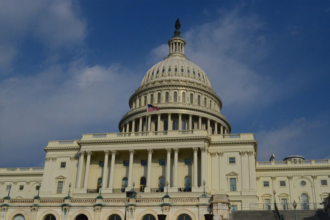The recent H-1B visa changes in the United States are shaking up global talent mobility. With sharply increased application fees and growing restrictions, skilled foreign professionals—especially in tech and research—are now exploring alternative destinations. Canada, often seen as a close economic and cultural partner to the U.S., is emerging as a leading contender.
Legal experts, economists, and industry advocates believe this is a strategic moment for Canada to open its doors wider. However, while the opportunity is clear, Canada’s own immigration system poses both possibilities and challenges.
Why Are H-1B Visa Changes Creating a Shift?
The U.S. administration has introduced a $100,000 fee for new H-1B visa changes, shocking tech firms that depend on these visas to hire foreign talent. Although current visa holders remain unaffected, the new rules are expected to severely limit fresh applicants—particularly recent international graduates aiming to work in the U.S.
This dramatic policy shift has created uncertainty across the American labor market. In response, tech professionals are now exploring more welcoming options, with Canada ranking high due to its proximity, similar work culture, and growing innovation hubs. Here is the link to our article on Canada Tech Reversal.
What Makes Canada an Attractive Alternative?
Canada offers numerous advantages. It shares time zones with major U.S. cities, has a high quality of life, and boasts strong academic institutions—particularly in fields like AI and biotechnology. Organizations like Build Canada are urging the government to act quickly, calling the current moment a “rare window” to attract displaced professionals affected by the H-1B visa changes.
Evidence supports this optimism. In 2023, Canada introduced a special work permit stream for U.S.-based H-1B visa holders. Within 24 hours, the cap of 10,000 applications was reached. Many of those applicants were experienced professionals looking to continue their careers without delays.
Are There Challenges Within Canada’s System?
Despite Canada’s strengths, immigration experts caution that the system is far from perfect. Many skilled workers face hurdles transitioning from temporary permits to permanent residency. Others struggle with long processing times and limited pathways for family sponsorship.
Moreover, critics argue that Canada’s current political debate over temporary foreign workers may create further uncertainty. The Conservative opposition has proposed restricting some visa categories, arguing for more domestic hiring. This unpredictability could deter high-skilled migrants who are already navigating complex systems elsewhere. Here is the link to our article on the Global Tech Competition.
How Has Canada Responded So Far?
The Canadian government has introduced programs like Express Entry and the Global Skills Strategy to attract highly educated professionals. These allow faster processing and priority access to key sectors such as tech, healthcare, and engineering.
Although officials haven’t commented directly on the H-1B visa changes, they emphasize ongoing efforts to refine immigration strategies. Canada’s goal remains clear: to draw top global talent by offering a stable, opportunity-rich environment for innovation and growth.
Can Canada Compete on Salary and Opportunity?
One concern remains: compensation. Experts point out that average salaries in Canada are generally lower than in the U.S., particularly in the tech sector. While this may be offset by Canada’s healthcare, education, and quality of life, it could influence top-tier candidates weighing their options.
Nonetheless, previous research suggests that companies often retain the same talent by relocating them to Canadian branches. Following earlier U.S. visa restrictions, firms adapted by moving workers to cities like Toronto and Vancouver, preserving both productivity and team cohesion.
Final Thoughts
The tightening of U.S. immigration policy via H-1B visa changes offers a moment of real opportunity for Canada. If approached strategically—with improvements to its own immigration pathways—Canada can become the preferred destination for global tech and research talent. However, for this potential to be realized, the country must move quickly and offer not just access, but a long-term vision for growth and inclusion.








